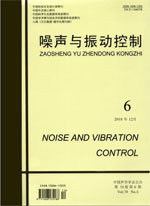Based on the beam transverse vibration theory, the singular function is used to establish the vibration response equation of the single-span simply supported beam bridge under the action of vehicles, and the Mathcad software is used to obtain the displacement and acceleration response curves of bridge vibration. The dual-lane Yu-quan Bridge is taken as the test object, which was arranged double row sensor in four sections, and the three working conditions of shifting vehicles are designed as follows, No.1 :sing vehicle, No.2: two vehicles moving along same direction and No.3: two vehicles moving along opposite direction. Each work condition sets 4 speeds, the acceleration response of the bridge in each experiment was collected by using the wireless telemetry dynamic strain test analysis system, and the influence of vehicle working condition and vehicle speed on the peak acceleration of bridge’s each section are analyzed. The research suggests that: (1) based on the result of the actual measurement, the vibration response of the two vehicles with same weight in the same direction is less than twice that of the single vehicle. (2) At the same speed, the peak of vibration acceleration under single vehicle is the smallest in three working conditions. (3) For the two sections on the east side of the bridge, when the speed is smaller, the acceleration peak of the bridge is higher for the condition that the two cars are in the same direction than that for the two cars are in the opposite direction; At the larger speed, the situation is contrary. (4) For the two sections on the west side of the bridge, under the measured four speeds, the acceleration peaks of the bridge are all higher for the condition that the two cars are in the same direction than that for the two cars are in the opposite direction; (5) When the speed is smaller, the acceleration peaks of each section under three conditions are not much different; However, when the speed is higher, the acceleration peaks of the section A on the east side of the bridge under three working conditions are the largest, and the minimum for the section D on the west side of the bridge.

